Samuel Phillips Hall, 1924, at Phillips Academy
Introduction
Text-to-speech Audio
Images
Samuel Phillips Hall, 1933
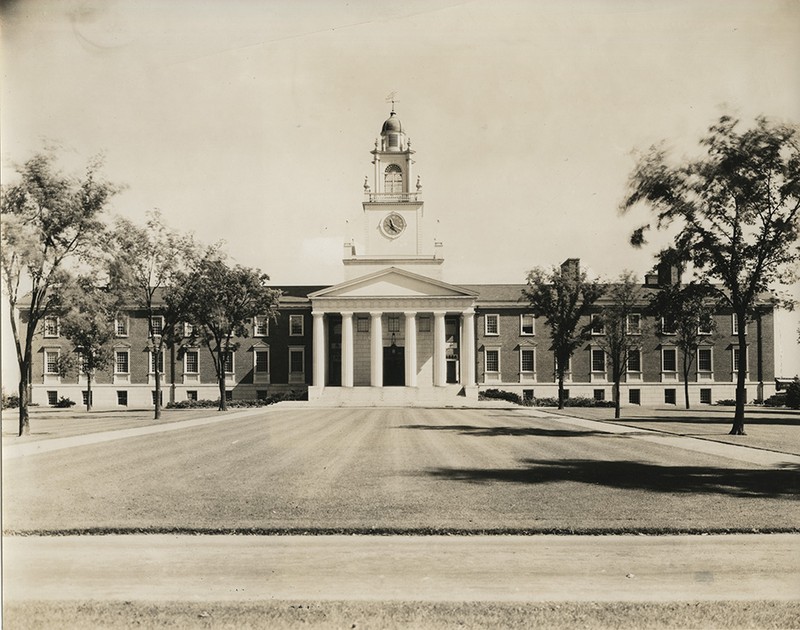
Samuel Phillips Hall. Sketch of proposed design by Guy Lowell, 1921
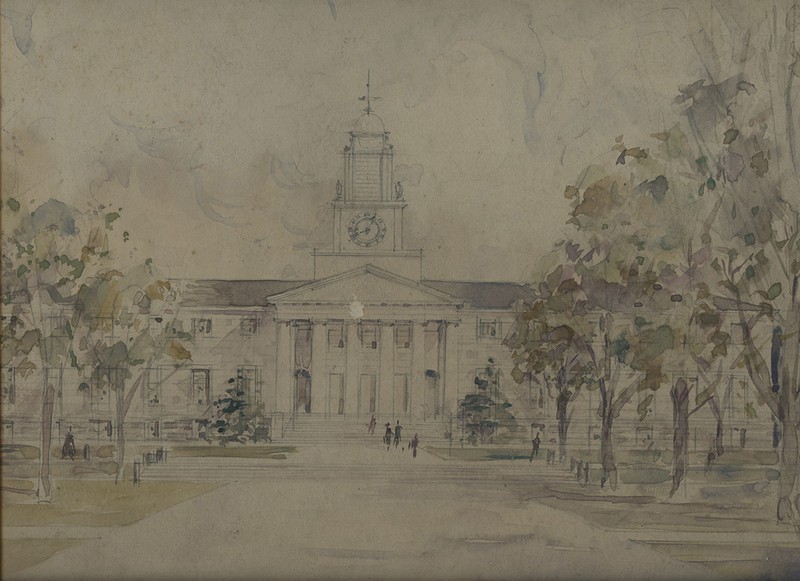
Looking over the Vista from Samuel Phillips Hall, 1933. Photograph by George H. Davis
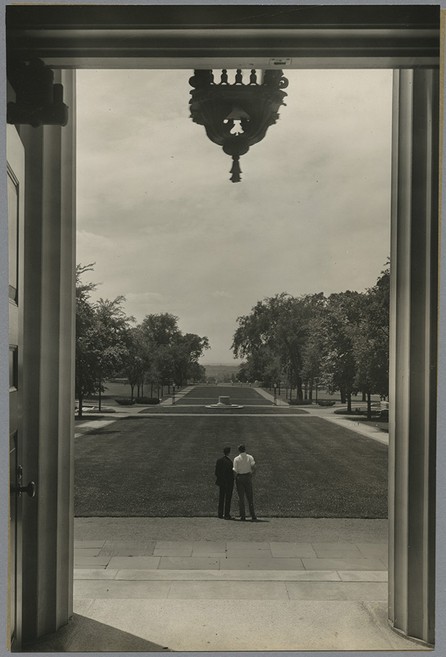
Samuel Phillips Hall
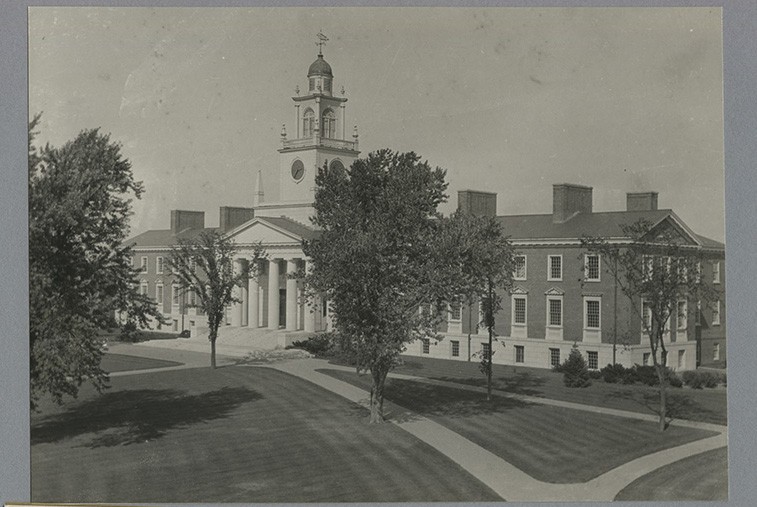
Samuel Phillips Hall Photograph by Arthur Haskell
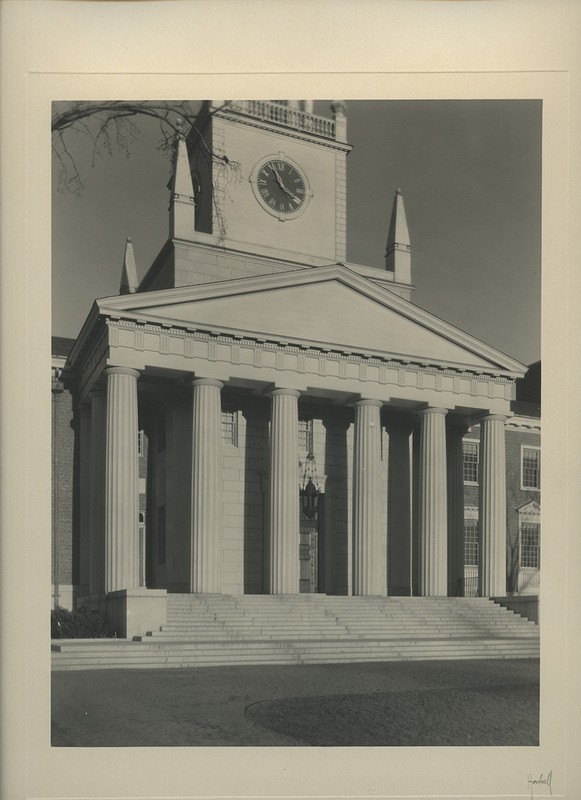
Samuel Phillips Hall Photograph by Arthur Haskell
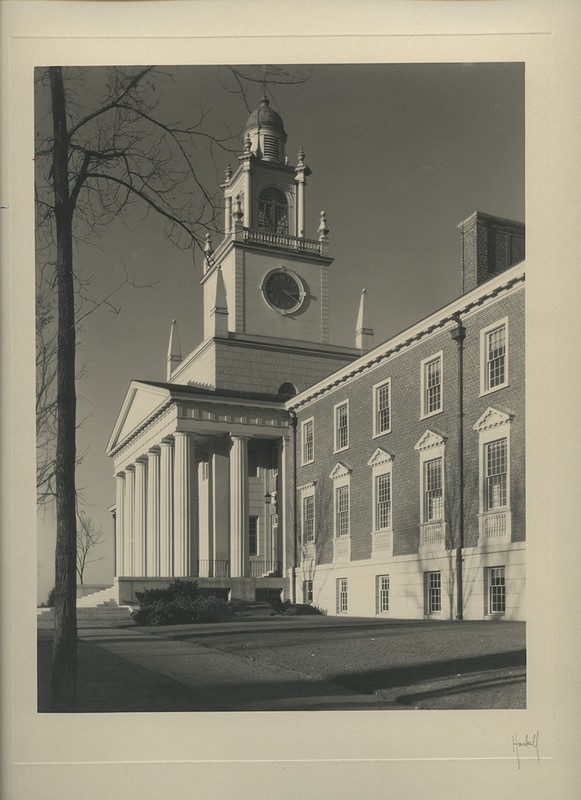
Samuel Phillips Hall classroom. Photograph by Arthur Haskell
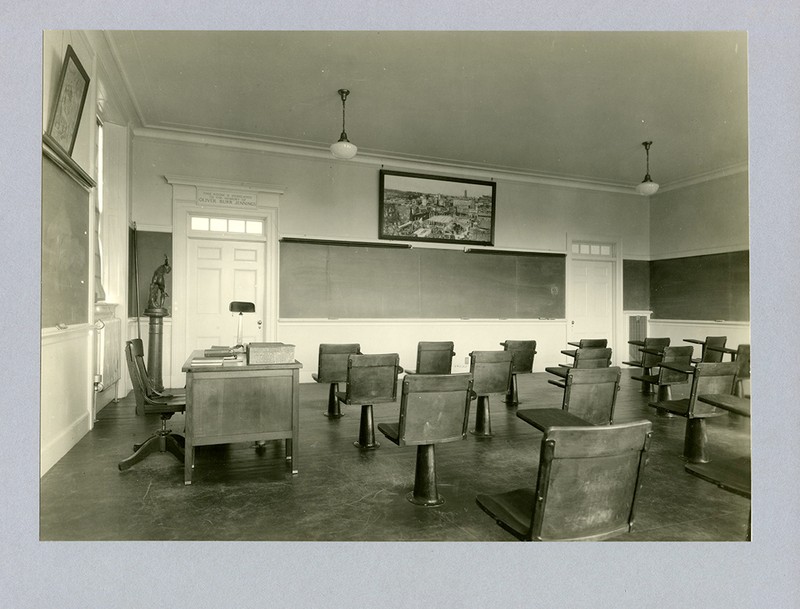
Samuel Phillips Hall faculty room. Photograph by Arthur Haskell
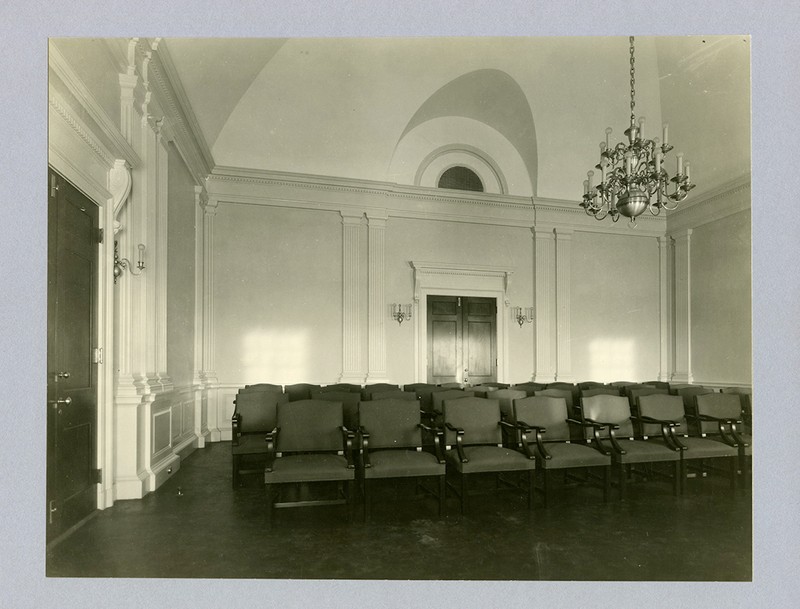
Backstory and Context
Text-to-speech Audio
After Andover Theological Seminary left for Harvard in 1908, the academy's board of trustees entered into several major programs to expand Phillips Academy's campus. In 1924, Thomas Cochran, class of 1890, assumed the role of benefactor. During the next several years, Cochran was directly responsible for, or the major contributor to, nine buildings and the sanctuary during his period of active involvement as a trustee of the academy.
Samuel Phillips Hall was the first of the buildings constructed during the Thomas Cochran era of growth. The architect was Guy Lowell of Boston in collaboration with Charles A. Platt of New York City although it was basically Platt's designs that were accepted. More than 2500 alumni donated funds for its construction. It presides over the Greener Quadrangle from the top of the Vista, the dominant east-west axis of Academy Hill. As soon as its location was chosen in 1922, Sam Phil became the keystone for the central campus. It anchored the Vista's eastern end, allowing Charles Platt to expand the organizational plan on which the present campus developed.
The importance that architect Charles Platt and trustee donor Thomas Cochran, aided by the school's treasurer James Sawyer, attached to the artistic remaking of the campus was demonstrated by the extraordinary efforts they expended to achieve it, most specifically their willingness to demolish or move incompatible existing buildings. Although buildings at Phillips and Abbot Academy had occasionally been moved in the past, it was usually for practical rather than aesthetic reasons. Only at Andover's campus, it seems, was the idea of creating a vista by moving several buildings actually carried out on a large scale.
Sources
Academy Hill: The Andover Campus, 1778 to the Present. New York: Princeton Architectural Press, 2000.
Allis, Frederick S., Jr. Youth From Every Quarter: A Bicentennial History of Phillips Academy, Andover. Hanover, NH: University Press of New England, 1979.
Domingue, Robert A. Phillips Academy Andover, Massachusetts: An Illustrated History of the Property (including Abbot Academy). Wilmington, Mass.: Hampshire Press, 1990.
Montgomery, Susan J. and Roger G. Reed. Phillips Academy Andover: An Architectural Tour. New York: Princeton University Press, 2000.
Phillips Academy Archives and Special Collections
